Ekwang - A delicious African delicacy made with grated cocoyams, leafy greens, and intensely flavoured spics with meats. You can't go wrong with its unique flavour, which is also a taste bud treat.
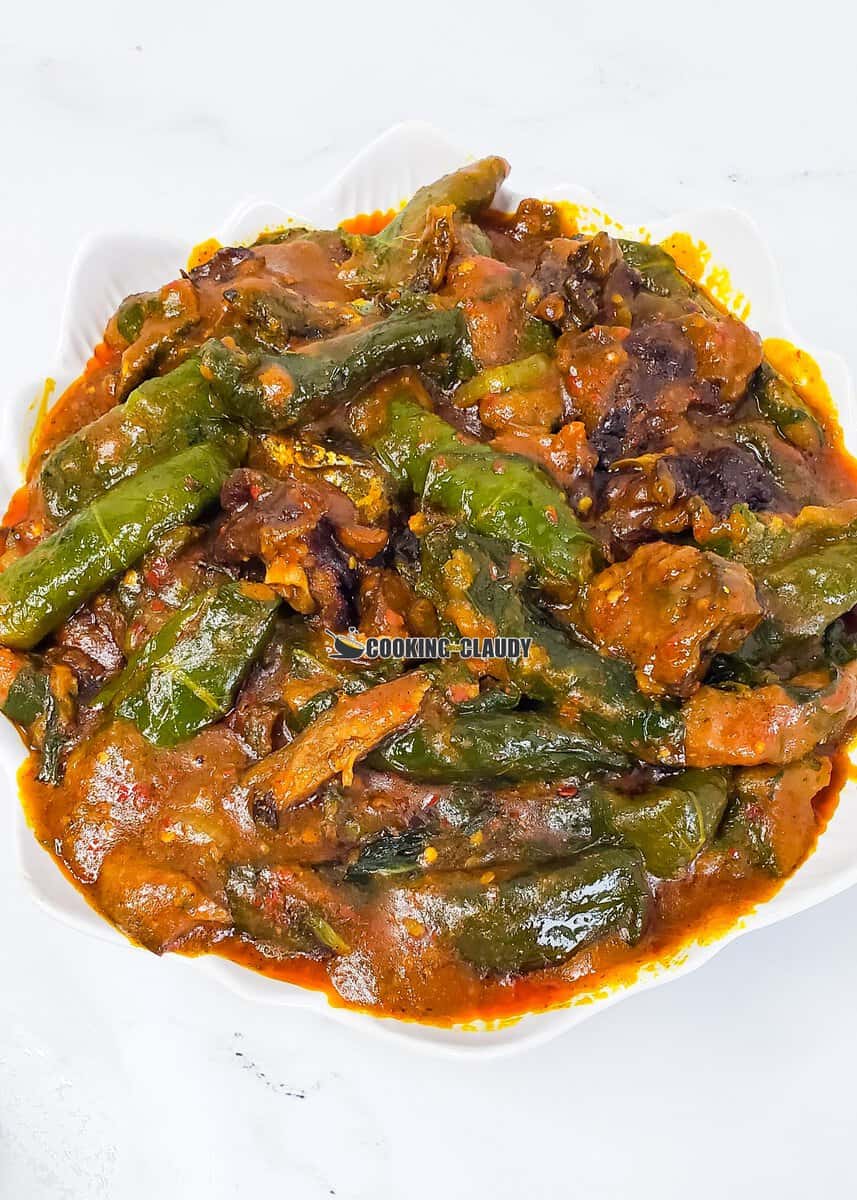
What is Ekwang?
Ekwang is made from grated fresh cocoyams and wrapped in green leaves. Traditionally, cocoyam leaves and "sweet" bitter leaves are used to wrap the grated cocoyams. Still, nowadays, many types of green leaves can be used and cooked with perfect spices, which emit that savoury aroma.
This is a traditional meal of some tribes in the Southwest Region of Cameroon and is enjoyed by many, especially me. Ekwang is also known as "Ekpang Nkukwo" in Nigeria and is a native dish of the southeastern part of Nigeria, particularly among the people of Akwa Ibom.
When my mom wants to cook ekwang, everyone joins because the process is challenging for more than one person. Ekwang is time-consuming, but read along because I have tips for you.
For those seeking a contrasting texture, consider serving Ekwang alongside Cameroonian Cornchaff. Our traditional Kwacoco and Banga soup or njama njama and kati kati recipe offers a perfect complement if you're in the mood for another Cameroonian specialty.
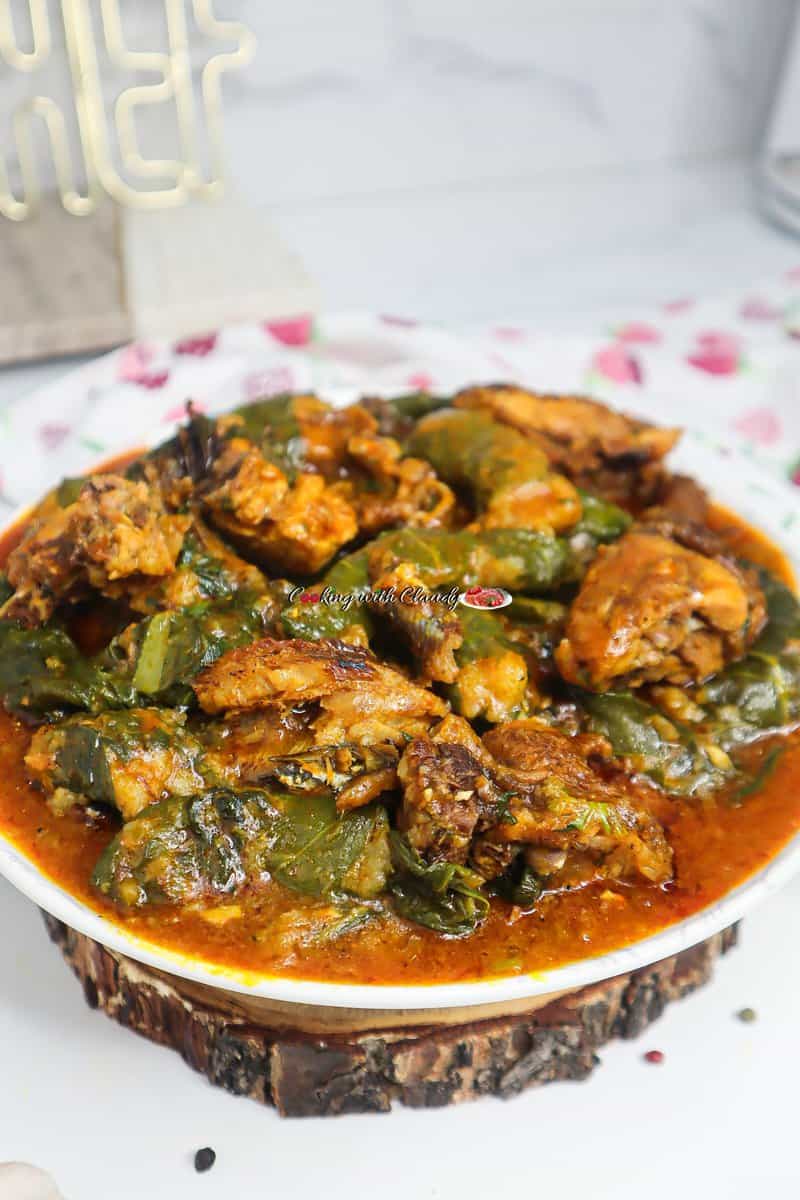
How can I ease the Ekwang Process?
- First off, to skip all the grating and wrapping process, buy frozen wrapped ekwang. Here is a video of how to cook Frozen ekwang.
- Use a juicer or food processor. This will avoid the grating process; yes, it's faster.
- Also, it can be a plan-ahead recipe. Prep and grate cocoyams and preserve in the refrigerator. It can stay for up to 2 days.
Ekwang Ingredients
Ekwang has many ingredients, but I will pick out the most important.
- Cocoyams: There is a particular cocoyam to use for ekwang. The red cocoyam is the best in Cameroon. It's called Macabo cocoyam. Cocoyams must be dry, so you can buy and dry (just let it rest for some few days). Sometimes, in diaspora, the cocoyams tend to have too much water. I usually transfer the grated cocoyams into a squeeze bag and squeeze out some water. Be careful not to squeeze over like it will be tough.
- Green leaves: Traditionally, Cocoyam leaves and "sweet" bitter leaves are used. If you are in diaspora, use spinach, collard greens, Yu Choy (my favourite Chinese leaf, the best so far), and lettuce. Avoid holes or tears on the leaves.
- Palm Oil: Only palm gives it he unique taste. Cannot be substituted.
- Proteins: Beef, fish, cow skin, smoked chicken, or any protein of your choice can be used.
- "Contry Onion", Black pepper, White pepper: For earthly and deep flavours. This makes the dish stand out.
- Palm Oil: This is one of the main ingredients which cannot be substituted.
- Salt and Bouillon to taste.
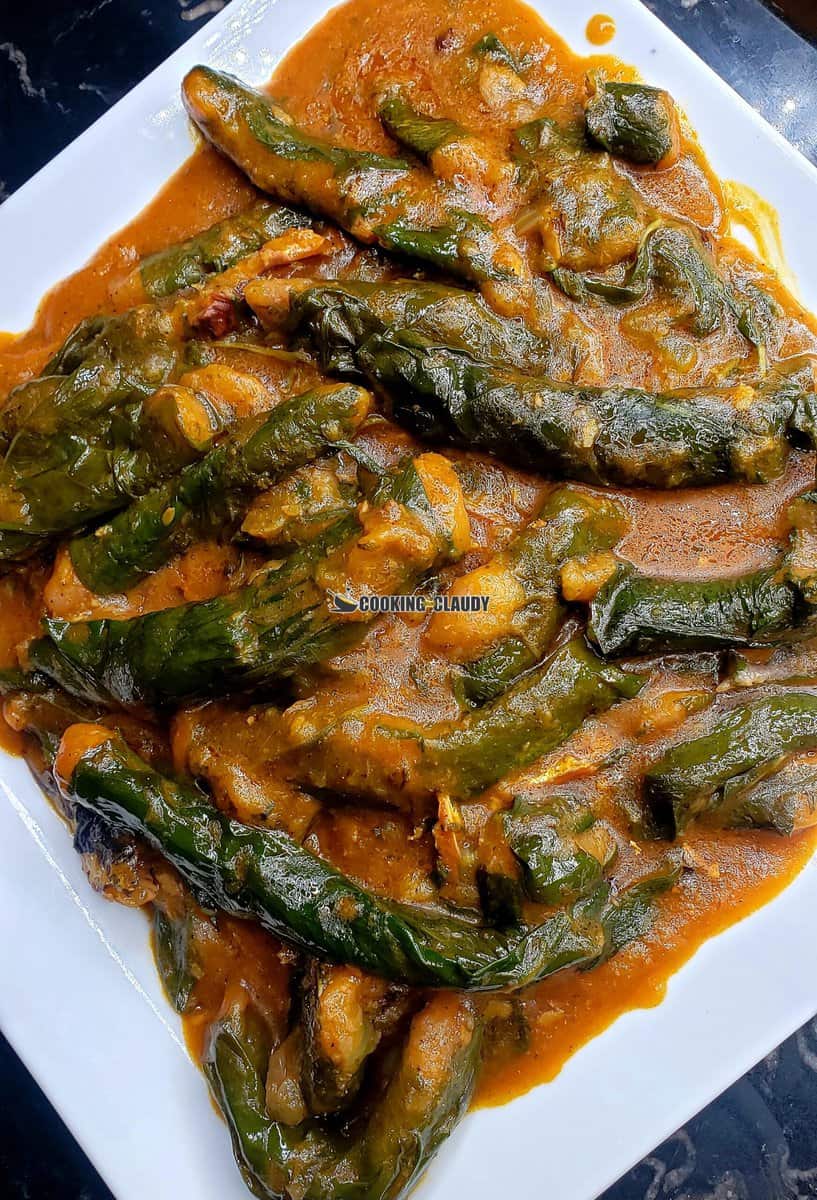
RECIPE FAQs
Can I use vegetable oil?
No, only palm oil because it gives this dish its unique taste and colour.
What if I have seafood allergy?
Feel free to skip the crayfish and smoked fish.
What if I don't have a grater?
Use a food processor, blender or juicer. The texture you wan to achieve should be slightly course.
What other leafy greens can I use?
If you don't have cocoyam leaves, use spinach, Yu choy, collard greens, Swiss chard.
Storage: Ekwang is best eaten immediately after cooking, but any left overs can be stored in an airtight container in the fridge for 3 days and in the freezer for 1 month.
Reheating: Allow to thaw overnight in the fridge or at room temperature then microwave till well heated. You can also add little water, then heat in a pot on a stovetop.
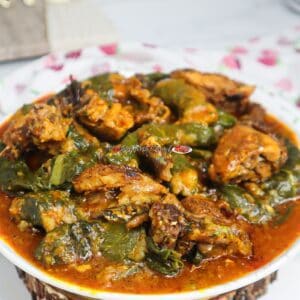
Ekwang Recipe
Equipment
- Grater or Juicer, Food processor
Ingredients
- 3-4 lb Large cocoyams can be about 5-7 cocoyams
- 4 Bunch Leafy greens Cocoyam leaves, spinah, yu choy, collard greens, sweet bitterleaves.
- 2 Cups Palm oil
- ½ kg Smoked Beef can use fresh beef
- ½ Cup Crayfish ground
- 1 Cup Smoked Fish or smoked shrimps
- 2 teaspoon Salt
- 2 teaspoon Contry Onion ground, Optional
- ½ large Onion Chopped
- ½ teaspoon Whitepepper
- ½ tablespoon Bouillon powder maggi, or ½ tablespoon seasoning powder
- 2 Scotch bonnets adjust according to spicy level
- 1 teaspoon Blackpepper
- 7-8 Cups Water or broth.
Instructions
- Slice beef into chunks, season with salt and seasoning powder, and boil on high heat until tender with about 3 cups of water. Save Beef broth.
- Peel cocoyams with a knife or vegetable peeler and wash with water till clean. Cocoyams can be itchy, so wash with gloves if you cannot handle the itch. Leave cocoyams inside water till ready to use so it doesn't discolour.
- Using a grater, grate the cocoyams or, if using a food processor, process until puree. Add 1 teaspoon of salt to pureed cocoyams and set aside.
- Tear leaves into pieces and wash perfectly.
- Oil the cooking pot with ¼ cup of oil and save the rest for later.
- Scoop about 1 tablespoon of the grated cocoyams place horizontally on the leaf and wrap tightly so it dosen't loosen while cooking.
- Transfer wrapped cocoyams into the greased pot with the end wrapped side facing down, making sure you leave tiny spaces between wraps so water can easily penetrate them.
- Boil about 5 cups of water in a separate pot.
- Add crayfish, beef, onions, fish, and all the ingredients except the oil to the pot.
- Transfer pot on low heat till wraps firm or holds for about 5 minutes.
- Avoid stirring with a cooking spoon at this point. Now add beef broth with 4 cups of boiled water and shake the pot making sure water reaches the base. Shake pot using the handles.
- Let it cook for about 30 minutes.
- After 30 minutes, stir gently, add palm oil and more water, and let it cook again for 30 minutes. Make sure you check the pot every 5 minutes to add water if need be so it doesn't burn.
- Avoid over stirring the ekwang makes mushy. Also adjust taste with salt, seasoning powder or water.
- Serve in a plate and let it cool. ENJOY.

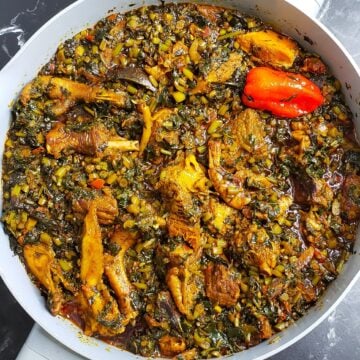

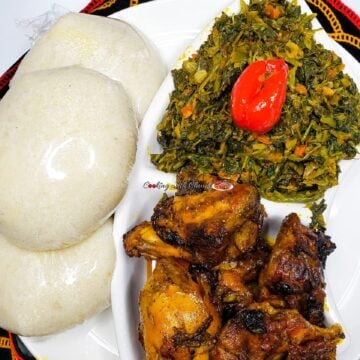
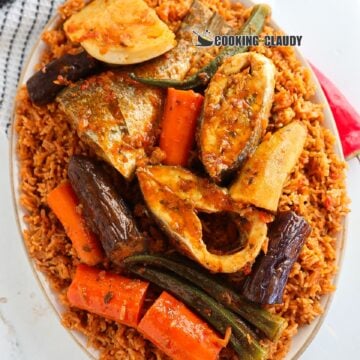
Bilikis
So amazing
Bilikis
This looks so delicious.Even though,have never heard of Ekwang before
Mi Bright
Hi Mme Claudy, your recipes never disappoint. I tried this out and it came out so tasty and yummy
Thank you very much
Ïtz Samira
I must say I enjoy ur recipe so much
Tank u had a prob on how to make this beautiful delicacy but coming across ur video on YouTube make it more easier for me tank u ma I'm greatful hubby will surely be happy with this cuz it's his favorite
Thanks for the feedback